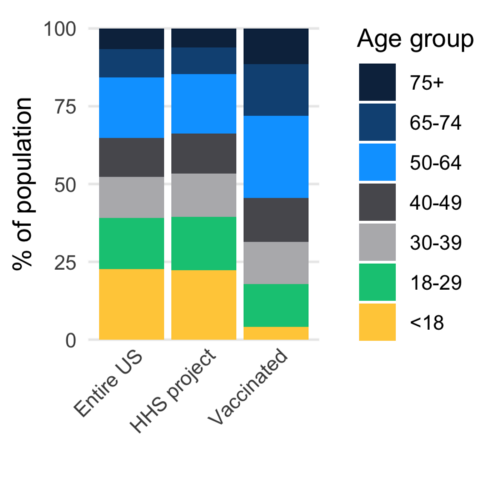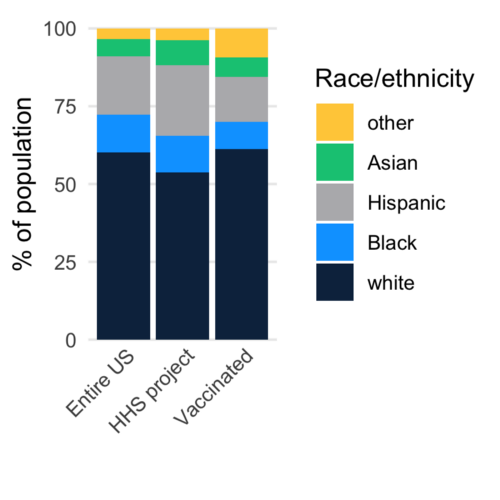Wastewater for equitable Covid-19 monitoring
Published:
Cross-posted from Biobot’s blog
Systemic inequities in our healthcare system have led Covid-19 to take a disproportionate toll on different groups of Americans, notably different races and ethnicities. Can wastewater-based monitoring of Covid-19 help promote health equity?
Wastewater-based monitoring serves everyone connected to a sewer system. This means that, if a wastewater monitoring program includes wastewater treatment plants that serve a representative population, then the monitoring program automatically serves a representative population.
In contrast, an equitable monitoring system based on clinical testing requires not only placing testing sites in the right places, but also that a representative population seeks testing. In other words, even if a testing site is located near a group of people, there is no guarantee those people will be served by that site. The same holds true for vaccination: even if a vaccination site is near people that could benefit from the site, there is no guarantee that they will benefit.
To visualize wastewater-based monitoring’s equitability, we compared the demographics of the US population against the demographics of the approximately 200 counties served by wastewater treatment plants currently participating in the US Department of Health and Human Services (HHS) national wastewater monitoring project. We also compared the demographics of the counties served by the wastewater monitoring program against the demographics of people who have been fully vaccinated.

We found that wastewater monitoring better represents the age structure of the US, compared to the vaccinated population. Younger people are underrepresented among the vaccinated population, while older people are overrepresented. Prioritizing access to vaccines for people at greater risk of severe Covid-19, such as older adults, helped prevent the most deaths and hospitalizations. However, all age groups can spread the virus, so it is important for disease surveillance to have an even representation across age groups, which wastewater monitoring can provide.

Wastewater monitoring also more equitably represents Black and Hispanic Americans, who are disproportionately affected by Covid-19 and are vaccinated at lower rates than white Americans. For example, while 12% of the US population is Black, only 8% of the vaccinated population is. Among counties served by the HHS project, however, 12% of residents are Black. Similarly, Hispanics make up 19% of the US population and 23% of the population served by the HHS project but only 15% of the vaccinated population.
Native American populations, too small to be easily seen on a bar chart, are an important part of the HHS project. Nine tribal lands spread over six different states are participating in the project. Native Americans make up 0.8% of the US population and 0.6% of the population served by the project.
Overall, wastewater-based monitoring is an important tool for tracking Covid-19, and the US government’s investment in a national monitoring program is an exciting step for this new, equitable way of tracking disease.
